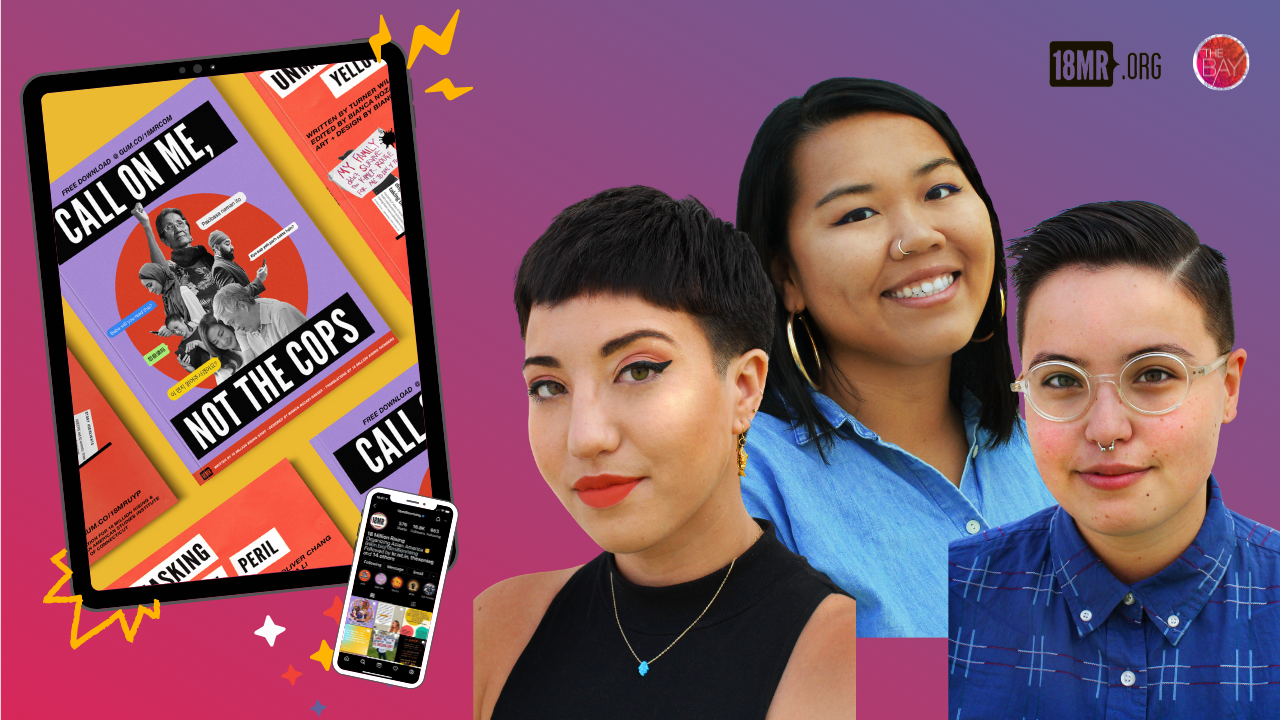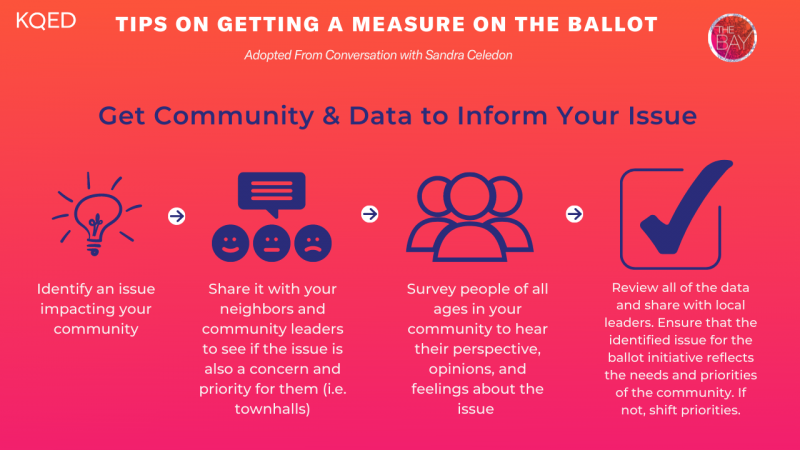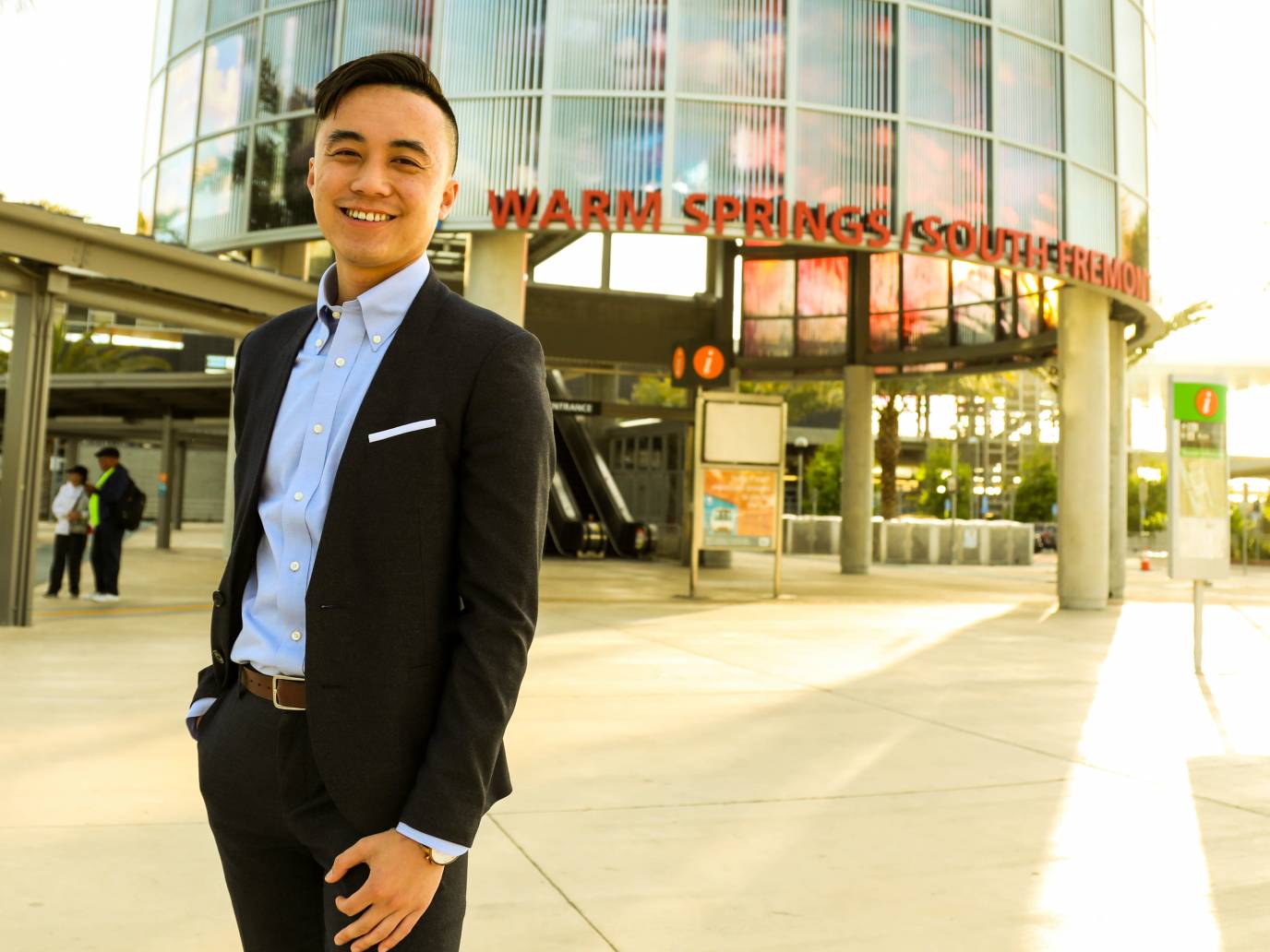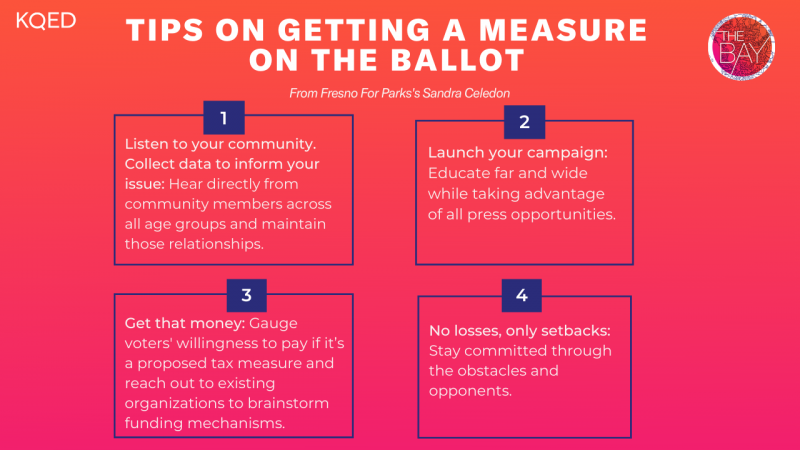The Bay’s How To newsletter series (sign up here) is an extension of By the People episodes that look into how democracy functions in the spaces around us — and where, exactly, each of us can plug in. These features include changemakers who have learned how to get involved locally and now are sharing their step-by-step guides.

If running for office isn’t your thing, maybe working with your neighbors to change a local issue is.
Let’s say you want to propose a new law for the state of California or your own city or county. You can, through the ballot!
And if lawmakers pass something you are not in favor of, guess what? You can start a process to revoke it.
Only 24 states offer residents the chance to submit statewide ballot measure initiatives, and California is one of them. Ballot measures propose new laws that can apply to cities and/or counties or to the entire state (then called propositions). Both need to be voted on and are included in voting ballots alongside the candidates running for office.
Ballot measures allow California voters to make new laws, change or repeal existing laws, change the state constitution, or approve a bond measure, without having to rely on lawmakers to do so. As a matter of fact, the 2021 recall election against Gov. Gavin Newsom is partly the result of a voter initiative.
The California secretary of state has compiled an extensive guide on how to navigate the bureaucracy and paperwork when organizing to get a measure on the state ballot.
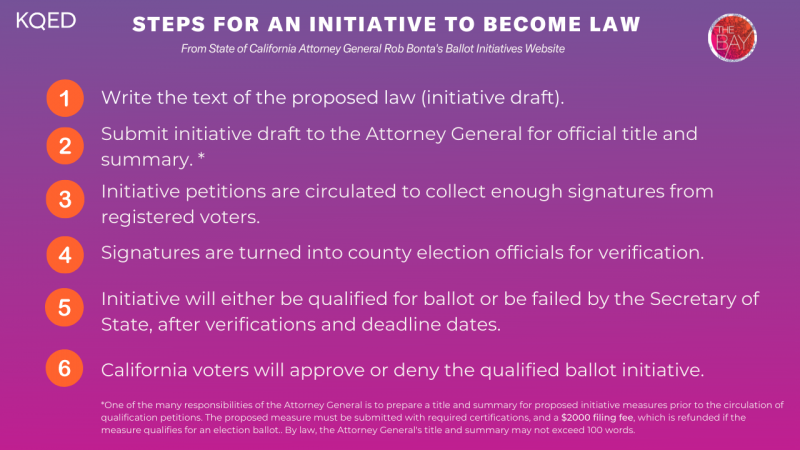
If you want to make a change in your city or county, getting a measure on a local ballot is also an option in California and that can happen through one of two paths:
- Direct: You collect the needed signatures and your initiative goes straight to the ballot.
- Indirect: You submit your initiative and it goes to a legislative body (like a city council), which then votes on it.
Where you live determines the rules you have to follow to successfully submit a ballot measure. It’s important to know the procedures and timeline because it can be an intricate and lengthy process.
For starters, many cities in California, like San Francisco, Oakland, Sacramento, San José and Fresno, are “charter cities.” This means that they each have their own process for getting a measure on their local ballots.
